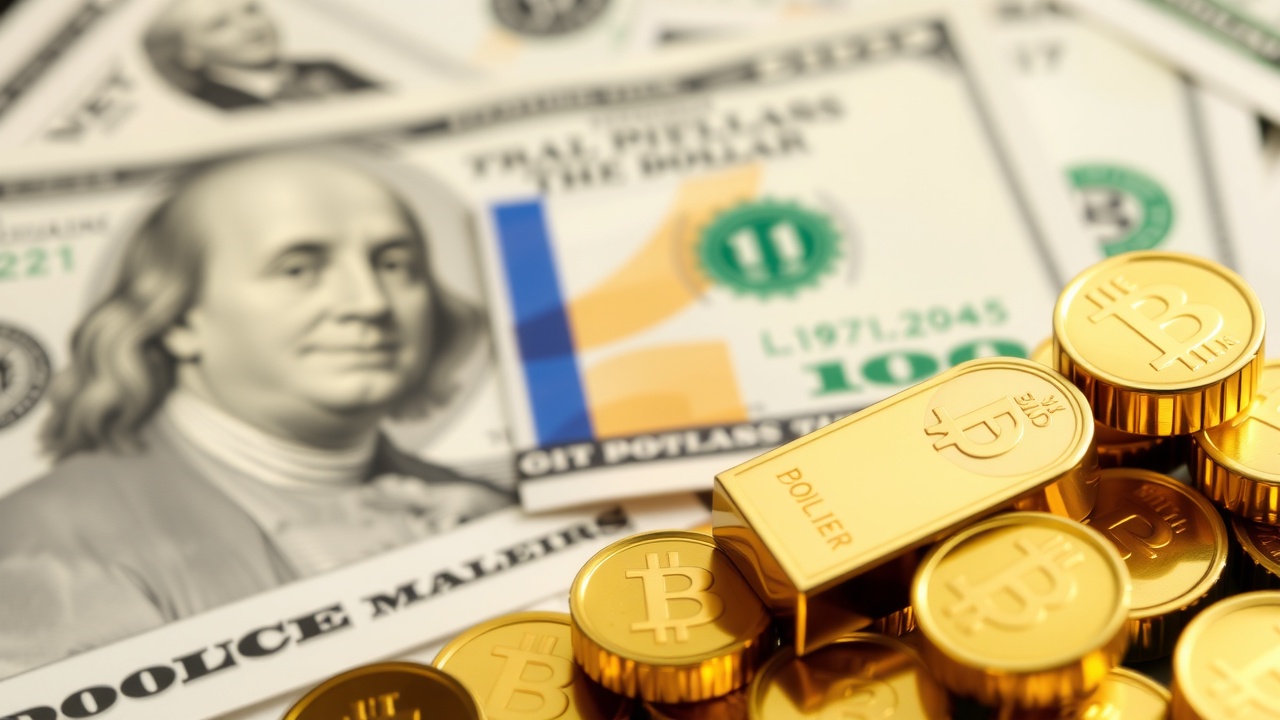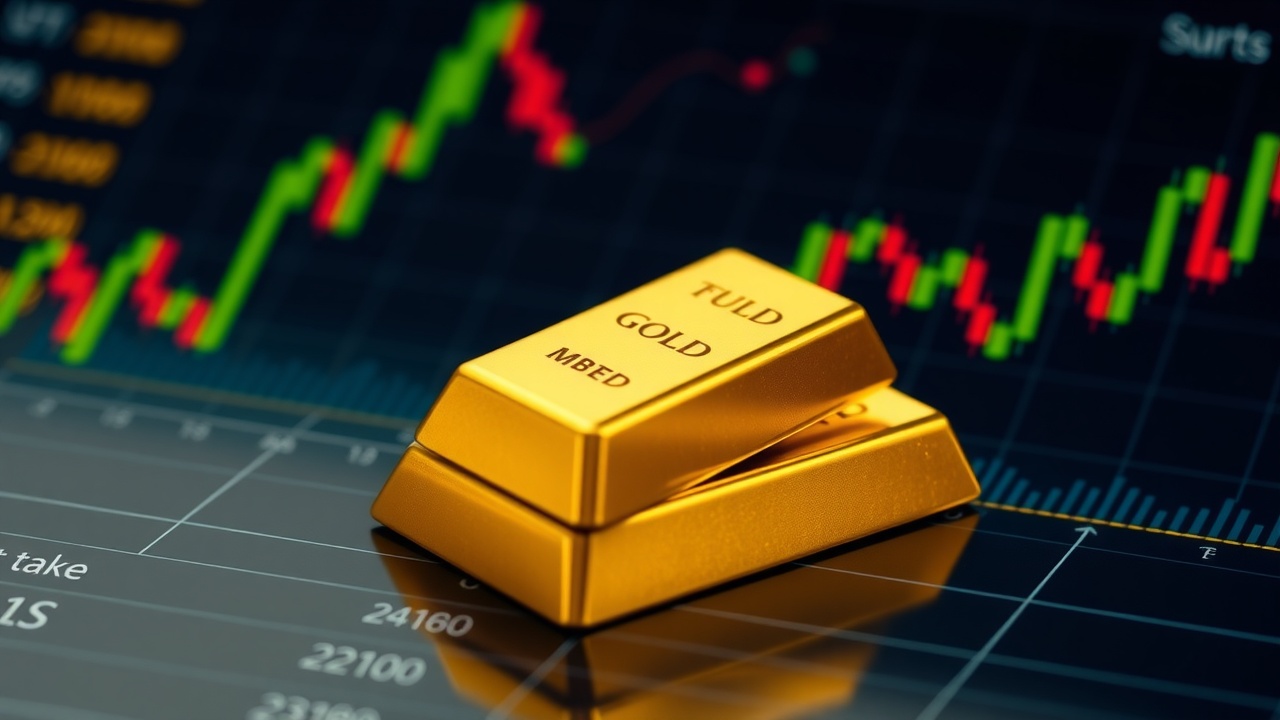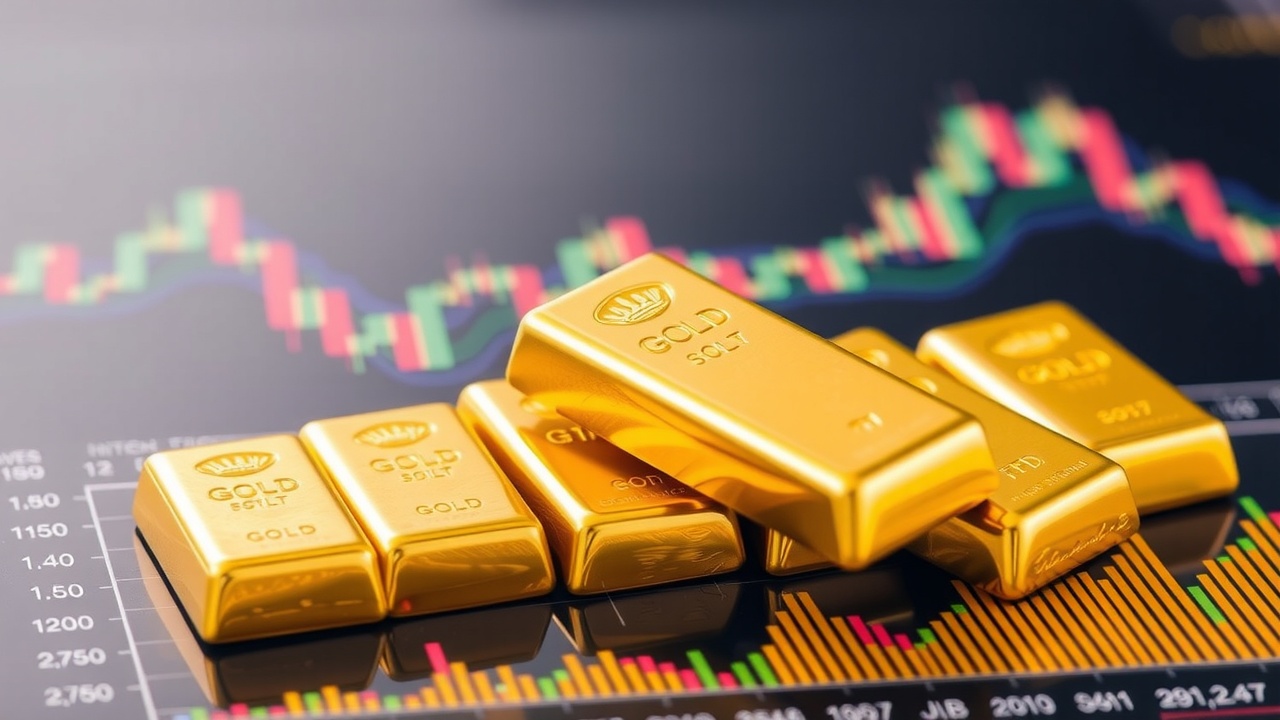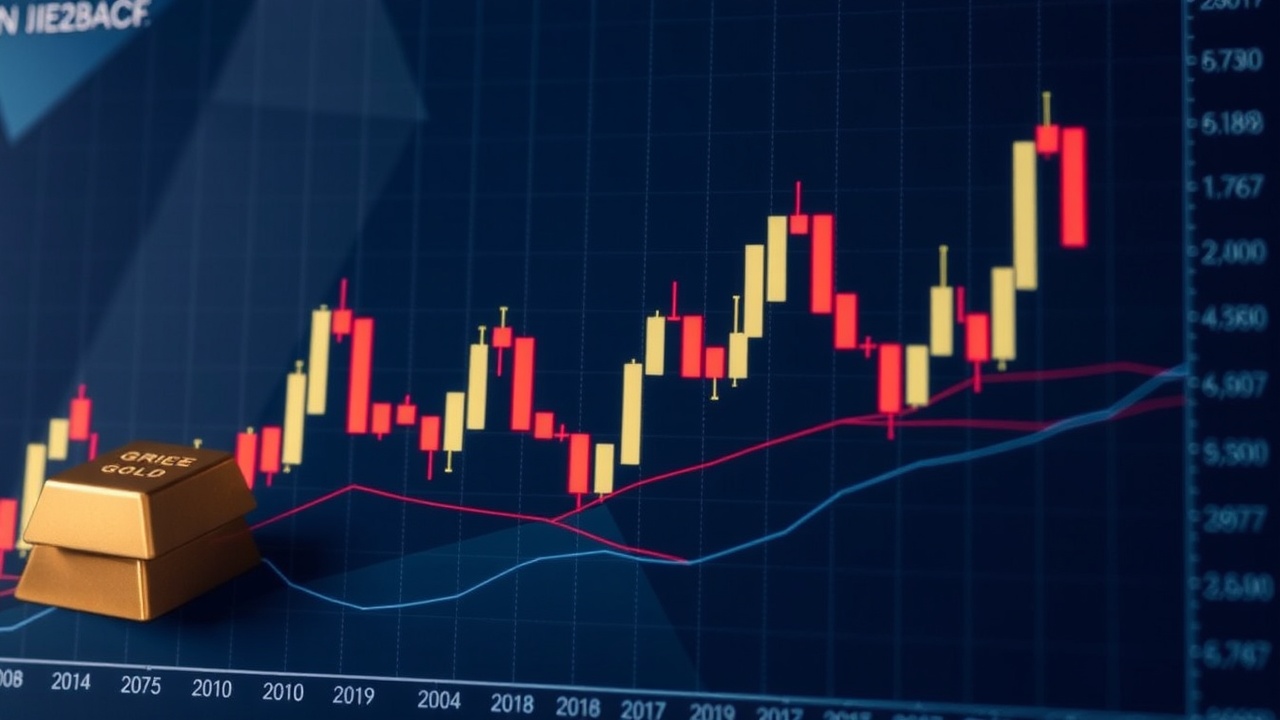
Kaylie Pferten explains why it matters and how much gold the US actually possesses
For many years, two rumors have been circulating in the gold markets. They have been dubbed conspiracy theories by some. Others point out that conspiracy theories frequently come to pass. What is the difference between truth and conspiracy? About thirty years.
The first is that China's gold reserves are much larger than its claims. In fact, we now know that this is accurate. Secondly, the amount of gold that America claims to have is much less than 8,133 tonnes.
Peter Beter, a former president John F. Kennedy's lawyer and financial advisor, has been spreading this since 1971. Kennedy stated that he was notified that the gold in Fort Knox had been taken out. He later wrote The Conspiracy Against the Dollar, a best-selling book about it.
The issue is the complete lack of transparency on the part of US authorities, which Elon Musk, the head of the Department of Government Efficiency, and current US President Donald Trump both believe will not last for very long.
Roosevelt starts the boom.
To comprehend this situation, however, we must go all the way back to 1933, when the US abandoned the gold standard in an effort to promote economic growth. In his well-known devaluation of the US dollar, US President Franklin D. Roosevelt raised the price of gold by 70%, from £20 an ounce (oz) to £35/oz. Over the next 15 years, US gold reserves would rise to previously unheard-of levels.
Americans provided some of the gold. They were now required to turn over any gold they owned to the authorities since it was against the law for them to do so. Some resulted from the government purchasing all US-mined supplies (any gold imported to the US assay office) and from the upward revaluation of gold, which caused a mining boom. Additionally, in order to safeguard the new, higher price at higher levels, the US started purchasing gold on overseas markets.
On the eve of World War II, US official holdings amounted to 15,679 tonnes in 1939. They would only get larger. Since Nazi invasions and expansion caused European countries to send as much gold as they could across the Atlantic for safekeeping or to purchase necessities, the United States' gold holdings peaked in 1949 at 22,000 tonnes, which is equivalent to half of all the gold ever mined.
In July 1944, when it was obvious that the Allies would win the war, representatives from the 44 Allied countries convened at the Mount Washington Hotel in Bretton Woods for the United Nations Monetary and Financial Conference to create a new monetary system for the new global order.
Dollars were used to settle international accounts, and at £35 an ounce, those dollars could be converted to gold. Exchange rates had to be kept within 1% of the US dollar by all nations. The world was essentially on a dollar standard, while the United States was on a gold standard.
For the system to function, the US dollar's gold backing had to be reliable, and even before the war ended, that reliability was in doubt. Required gold reserves for outstanding notes were lowered from 40% to 25% by the Federal Reserve Act of June 1945, and the requirement for gold reserves against deposits was lowered from 35% to 25%. A third of the dollar's purchasing power was lost between 1944 and 1954 due to increased supply, but the £35 Bretton Woods price persisted.
With the costs of foreign aid, America's new welfare programs, and maintaining a military presence in Europe and Asia, the US government's spending was out of control and it started to run balance of payments deficits. Gold started to leave the United States. Reserves had decreased by 9,500 tonnes by 1965, or 40%, from their peak in 1949.
The outflow was unsuccessfully halted by several US administrations. Kennedy levied the "equalization tax" on foreign investments, Dwight D. Eisenhower prohibited Americans from purchasing gold abroad, and Lyndon B. Johnson urged Americans not to travel at all. He remarked, "We might have to give up the pleasures of Europe for a time."
Fears that the dollar would weaken after the election, which Kennedy won, caused the price of gold in London to drop to £40/oz. Together with the Federal Reserve, the Bank of England started to boost gold sales in an effort to control the price.
Six major European countries (Belgium, France, the Netherlands, West Germany, Italy, and Switzerland) joined the London Gold Pool the following year, coordinating sales to suppress, or "stabilize," as they put it, the price of gold and relieve unwelcome upward market pressure.
However, the pool found it difficult to meet the increasing demand. Although the price of an ounce of gold was still £35 in 1965, gold reserves had also dropped precipitously, and the dollar's purchasing power had dropped by 57% since 1945. The US government's expensesspecifically, the Vietnam War and President Johnson's massive welfare expenditureswere to blame.
A strain on Bretton Woods.
These programs were not only expensive, but they also weakened Bretton Woods as domestic inflation increased and global trust in the dollar declined. Because the US could print a £100 bill, non-American countries felt cheated that they had to produce £100 worth of goods and services in order to receive one. The term "America's exorbitant privilege" was coined by French Finance Minister Valry Giscard dEstaing.
On the other hand, President de Gaulle had had enough. He turned all sterling balances and French dollars into gold, ignoring the pool. In order to retrieve their gold, the French even dispatched battleships to New York. It's probably a coincidence that De Gaulle was the target of multiple assassination attempts. He believedand was correctthat there were a lot more US dollars in the world than there was gold to support them.
Charles de Gaulle's headshot.
Charles de Gaulle, the president of France, advocated for the use of gold as the only medium of exchange.
(Image courtesy of Bettmann/Getty Images) By 1967, the United States had £12 billion in gold reserves, one-third of what was required to support the dollar, compared to £36 billion in foreign liabilities. Switzerland, Spain, and West Germany started to demand gold in exchange for their dollars. During one of its quadrennial collapses, the British even requested that the Americans prepare £3 billion worth of gold from Fort Knox for withdrawal. The demand for private gold was tremendous.
To "achieve a substantial surplus on the balance of payments consistent with economic growth and full employment," the British government devalued the pound by 14% in November 1967, from £2.80 to £2.40.
There was up to 100 tonnes of bullion demand per day in that month, which was more than the London market would normally see in nine months. In order to reduce demand, they outlawed leverage, forward buying, and credit-based gold purchases. That year, the pool lost 1,400 tonnes, which is more than a year's worth of mined supply.
In January 1968, the Viet Cong and North Vietnamese Peoples Army of Vietnam launched the first of several surprise attacks on US military forces in South Vietnam, which only served to increase selling pressure on the US dollar.
US military planes flew tonne after tonne of gold to RAF Lakenheath in an attempt to support the system. From there, the gold was trucked in military convoys to the Bank of England's back entrance; at one point, the weight of the gold caused the floor of the weighing room to collapse.
Bolstering the system.
Seven hundred and eighty tonnes were sold to the market in the four days from March 11 to March 14, 1968. It was decided that there was no chance of protecting the price. "At the request of the United States," UK chancellor Roy Jenkins announced a bank holiday on March 15 and closed the gold market for two weeks.
Zurich shut down as well. With gold trading at a 25% premium, Paris remained open. To maintain that £35 price, over 3,000 tonnes were sold to the market over the course of the last 15 months. Over one-eighth of the pool's reserves were gone.
Governors of the central banks in the gold pool announced two days later that there would be a free-market price for private transactions and a fixed price of £35/oz for official government transactions in the hastily drafted Washington Agreement. This was not the last time that central bankers were living in a different reality.
Gold is one thing. There are also gold standards. Particularly fake ones like this one, where citizens themselves did not handle gold, have a tendency to fail. Given that he was one of the designers of this one, it may be ironic that Keynes called them barbarous.
Nixon, President, in the White House.
In 1971, President Nixon removed the US from the gold standard.
(Photo courtesy of Disney General Entertainment Content via Getty Images) President Nixon removed the United States from the gold standard in August 1971, a "temporary" decision that has persisted for more than half a century. Gold Switzerland aside did not participate in the global monetary system for the first time in history.
Obviously, the speculators were to blame. It always is. Nixon evaded accountability by stating that he had instructed the Treasury secretary "to suspend temporarily the convertibility of the dollar into gold" and "to take the action necessary to defend the dollar against the speculators."
The US gold audit is long overdue.
Fort Knox is home to the United States Bullion Depository.
Fort Knox is home to over 4,000 tonnes of gold.
The US holds its gold in four locations: Fort Knox, Kentucky (about 56 percent of its 8,133 tonnes); the Federal Reserve Bank of New York (8 percent); and the Denver and West Point mints (the remaining 36 percent). (Image credit: Bettmann / Getty Images). Since 1953, this gold has not been properly audited by the public. Internal audits did occur, particularly between 1974 and 1986, but they lacked transparency.
Many individuals, including gold specialists, do not think the gold is present. According to them, the US spent it attempting to control the price of gold in the 1960s. Both Musk and Trump have made repeated promises that this gold will be audited in this new era of American transparency.
The idea of doing it livestream has been floated. Trump has even implied that the gold was taken. Perhaps someone stole the gold, so he explained, "We're actually going to Fort Knox to see if the gold is there." Gold by the tons.
They've been playing it so lightly that you have to assume they are aware of the existence of the gold. In addition to posting a picture of a Fort Knox starter kit, which includes a brick and some gold spray, Musk was also making fun of the conspiracies on podcasts. If there were any real doubts, I fail to see how they could be kidding.
Scott Bessent, Secretary of the Treasury, has stated unequivocally that the gold is present. In a recent Bloomberg interview, he reported that the last audit took place in September 2024. He then assured the American public that "all the gold is present and accounted for" while lowering his gaze. However, this wouldn't have been a complete audit; it would only have been an internal one.
The United States Mint claims that "very small quantities of gold used to test the purity of gold during regularly scheduled audits have been the only gold removed." "For many years" has passed since any additional gold was moved to or from the depository. But how many years? As far back as the 1960s, to be sure.
It's pretty astounding how secretive everything is. For a congressional delegation and some members of the press to see the gold in 1974, they opened the vaults. Rumors were also circulating at the time. Mary Brooks, the US Mint's director at the time, stated, "We've never done this before and well probably never do it again."
Then, in 2017, during Trump's first term, Senate majority leader Mitch McConnell and Treasury Secretary Steven Mnuchin were invited to see the gold. "The gold was there," Mnuchin declared. He is "certain" that no one moved it. "Serious security protocols in place" are in place. However, Fort Knox contains more than 4,000 tonnes. A medium to large suitcase is roughly the size of a tonne. Was he able to see all 4,000?
The gold's purity is the other major concern. Not everything that is available may be of high delivery quality, which would make it difficult for international bullion markets to accept. The majority of the gold will be in the form of "coinmelt," or melted down coins, if it is the bullion that Roosevelt seized in the 1930s.
The £20 double eagle and other frequently seized coins were only 90% pure and had been tempered with copper to make them harder. They weren't always refined to modern standards when melted down, and the bars that resulted weighed between 320 and 330 ounces rather than the 400 ounce bars that are considered good delivery today. This implies that Fort Knox gold would not be accepted in practice without further processing.
However, until an audit is conducted properly, this is just conjecture, albeit well-founded conjecture. We don't have all the information. We don't need to, and it would be too much work, are the weak justifications offered for not doing a thorough audit. Will you please?
The price of gold may increase significantly if US gold is found to be absent. Everything is going as usual if it is present.
As of right now, the markets are acting as if nothing has changed. They are rising, and it appears that central banksparticularly in Asiaare purchasing every dip as they diversify their holdings and de-dollarize. However, this audit cannot be rushed.
In conclusion, I would like to disprove a popular theory. At the moment, US gold is priced at £42/oz. If those 8,133 tonnes are present and of good delivery quality, they could be marked to market at current prices following the audit, which would result in a large increase in the holdings' value.
Treasury Secretary Bessent is rumored to have used some of the upward revaluation to monetarily bolster the balance sheet, similar to what Roosevelt did in 1933, in order to generate funds for the strategic bitcoin reserve, among other things. However, Bessent has made it very clear that's not his goal.














Leave a comment on: America's gold mystery and the importance of an audit